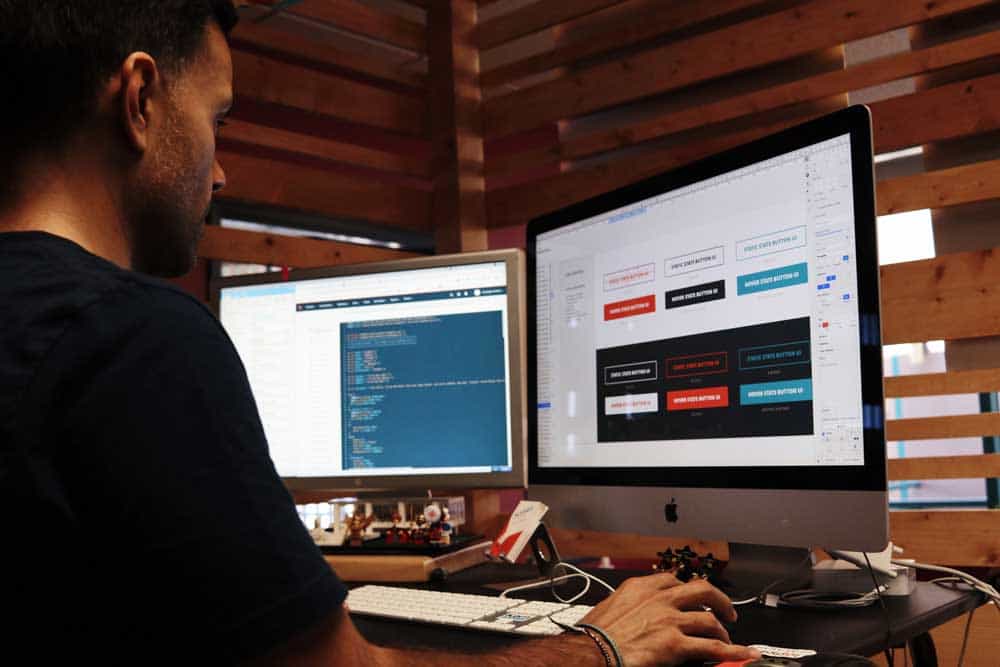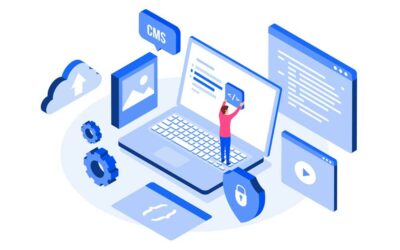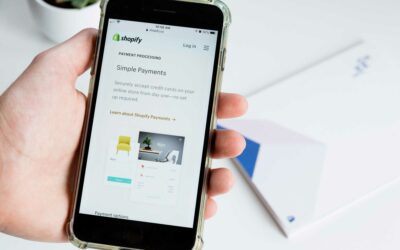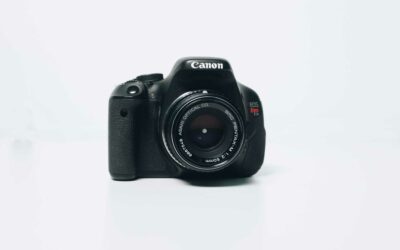If you’ve never heard of user-centric web design (UCD) before, you will want to consider the approach because it has amazing benefits for your business. The principles of UCD can improve the performance of your current website.
Similarly, if you’re thinking about setting up a website for your business, UCD can help mitigate the risks associated with launching a website for the first time by identifying potential problems before they happen.
The 4 Benefits Of UCD For Your Business
Think of your favorite supermarket. Your city has more than one chain of supermarkets but why do you keep coming back to this particular one? Maybe it’s because the supermarket has the following features:
- A large number of parking spaces in covered areas.
- The merchandise is efficiently organized.
- The supermarket always carries stocks of your favorite brands.
- The supermarket’s prices on select merchandise are comparatively lower than others.
- Price-checking machines are available everywhere.
- You have several payment options at the checkout counter.
- The color, lighting, and music are pleasant.
- The cashiers, supervisors, and the stocking crew are friendly and helpful.
- The supermarket serves the best pizzas and roasted chicken.
These features that distinguish the supermarket from the rest are a result of the chain considering the specific needs and expectations of its clientele. They know what the shoppers want and created an experience that’s customized for them.
How did the supermarket chain find out what its customers wanted? They conducted research that allowed them to reach out to the customers, solicit their input, and invariably get them involved in the planning process.
UCD is an approach whereby the user is involved in all stages of the web design process. The purpose of UCD is to come up with a website that’s accessible and highly usable for the targeted end-users.
In order to bring the users into each stage of the design process, the web design team will incorporate different research techniques, investigative tools, data-gathering methods, and generative activities such as brainstorming.
How will UCD benefit your business?
- Getting your end-users involved in the design process will give the design team a reliable filter from which to evaluate the level of usability and accessibility of the website.
- Having the design team come in close contact with the end users helps build and foster relationships. Knowing who the end users are will add a valuable and often overlooked element to the design process: empathy.
The developers will become more conscientious about delivering a website that respects the values, ethics, and morals of the end users. - UCD contributes to developing sustainable websites or websites that can accommodate particulars such as cultural diversity and accessibility for the handicapped.
- By acquiring customer-centric data, you’ll be in a better position to identify potential problems in the future such as changes in tastes and preferences, and online behavior.
Anticipating these problems and incorporating solutions during the early stages of the design process can prevent unwanted situations from coming up while the website is gaining traction with users.
And if a problem does arise, you’ll be able to course-correct the design of your website before the situation can significantly affect its performance.
Thus, the cost of the remedy would be comparatively lower than if UCD wasn’t considered in the website’s design.
User-Friendly Web Design And User-Centric Web Design: What’s The Difference?
Let’s distinguish user-friendly web design from user-centric web design.
With a user-friendly design, you want a website that’s usable, accessible, and responsive to the general population of potential visitors.
People who visit your website will find it easy to use, simple to navigate, and responsive to their actions. But they might just be visitors and not prospective customers.
With user-centric design, you’re developing a website with features, design components, and elements that are specific to the needs and demands of a targeted market.
These are your prospective customers and frequent site end-users. When they visit your site, there’s a strong intent to buy your products or acquire your services.
Will focusing on UCD diminish the interest of casual visitors who might be potential customers?
Remember that a visitor who clicks on your website casually already has a measure of interest. It might be small, but the interest is there. A user-centric website might nurture that interest and convert the visitor into a paying customer.
For this reason, we can add a fifth benefit of UCD – improve SEO and potentially give your website a boost in the search rankings and increase sales conversions.

4 Stages Of UCD
User-centric Design is an iterative process in that it involves the use of mathematical calculations and scientific computations. However, it also incorporates principles of human behavior and psychology.
Combining these sciences will help the web design team develop a holistic website that comprehensively understands what its users need.
There are 4 stages of UCD:
1. Stage 1 – Understanding the Context of Use
To understand the context of how the website is used, it’s important to conduct design research.
Design research is the process of gathering and analyzing qualitative and quantitative data in order to gain a comprehensive understanding of how the target market intends to use the website.
Qualitative research refers to observational data or metrics that involve a measure of objective analysis such as surveys, responses to interviews, and analyzing the results of UI interface tests like click-path tracking and heat mapping.
Quantitative research involves reviewing and evaluating onsite metrics or analytics such as page views, number of visitors, the completion rate of tasks, and bounce rate to name a few.
Another example of the quantitative approach is correlational research design whereby the web design team compares and contrasts the relationship between 2 independent variables.
The purpose of correlational research design is to identify possible changes in trends and anticipate shifts in consumer behavior by running tests on the variables.
Specifically, design research seeks to find the following information:
- The needs and behaviors of the target market
- The latest trends and developments in the target market’s industry
- The level of competition in the industry
The data that are collected and analyzed during the design research process will be used to create a user profile and develop a website with features that correspond with the behaviors of the end users.
2. Stage 2 – Identify specific user requirements
Once you’ve understood the context of use, you can get into the details and identify the specific requirements of the user. With the data gathered from the design process, you can create customer or buyer profiles and categorize them based on needs or specific demands.
For example, your business sells running shoes online. Based on the data gathered during the design process, your typical buyer has the following characteristics:
- Male.
- 28 to 54 years old.
- Employed; average annual income of US$50,000.
- Spends US$600 a year on running shoes.
- Prefers to shop online via mobile.
- E-commerce site preferences – Availability of a 10-day return policy with replacement due to wrong fit or factory damage, COD payment option, quick response time to issues and concerns, and a customer loyalty program.
- Currently patronizes only 2 e-commerce sites that are dedicated to running.
- In addition to shoes, also buys other types of running apparel such as shirts, shorts, and socks.
- Prefers to run outdoors on a trail path but also runs on an outdoor track and a treadmill.
- Competitive; joins 2 races a year.
- Follows a regimented diet and supplement plan for runners.
- Performs search and peruses social media content for the latest information on everything related to running.
The web design team can prepare a list of goals for the end user with the information.
And with the list of goals, the developers can start putting plans into action that will help the end-user accomplish his goals. The solutions will guide the web design team in designing a user-centric website.
3. Stage 3 – Development of website design solutions
Let’s stay with our example of a business that sells running shoes online.
Based on the data you’ve gathered, the initial iteration of the website would have the following features:
- Mobile responsive.
- Extensive product descriptions.
- The images used throughout the website, particularly the home page, would showcase trail running shoes and brands with a higher-end price point of US$150 to US$200.
- Links embedded from the YouTube channel that feature videos about trail running shoes, informational videos on running tips, and how-tos.
- Blog page with articles on running, diet and supplementation, race preparations guidelines, and training programs.
- A Call-to-Action (CTA) such as a free e-book on topics such as “How to Choose the Right Running Shoe” and “A Winning 4-Week Running Program For Your Next 5k Race”.
- Chat plugin with AI and human support for 24/7 sales and customer service.
- The zoom-in feature is available on all products.
- Automatic send out of a cart abandonment email.
- Automatic email confirmation on confirmed purchases and delivery schedules.
To find out what colors, graphics, and images appeal to the customer, the design team will visit the e-commerce websites that were commonly mentioned by the respondents.
Other factors such as site speed, navigability, functionality, the quality of the CTA’s, the quality of content, and the availability of built-in interactive features in the competitors’ websites will also be reviewed and analyzed.
The design team will continue to review the data and reach out to the survey respondents, study participants, control groups, and other representatives of their target market in order to fine-tune the design of the website.
4. Stage 4 – Evaluation of the site’s performance against the expectations of the end-users
As the website nears completion, it will be tested and the results measured against the expectations of the end-users. One of the most effective ways to run tests is to incorporate Agile methodology in UCD.
Agile methodology aligns with the iterative approach of UCD as there is continuous collaboration with the stakeholders and end-users throughout the design process.
The feedback from end-users will be collected, analyzed, and referenced throughout the testing stage.
The goal of Stage 4 is to bring the website as close as possible to the objective that was established at the start of the design process – to provide solutions to its end users. Testing exposes the flaws in design and identifies potential trouble areas in the future.
The design team sets the bar for customer satisfaction. The results of the tests will determine if they have reached the bar or surpassed it.
Conclusion
UCD is ideal in today’s age when businesses prefer to pull customers to their products instead of pushing them to their faces. Businesses aren’t just focusing on taking a personalized approach. They want to customize the experience to meet the needs and expectations of the specific end-user.
Incorporating the principles of UCD in web design works because you become a proactive partner in the strategic relationship with your customers. They will feel valued and will recognize your website as the best one-stop solution destination URL on the internet.
If you want to learn more about UCD in web design, give us a call or drop us an email. Let’s set aside a few minutes to discuss the approach and how UCD can be applied to your website.
And if you enjoyed this article, feel free to share it with your community.






